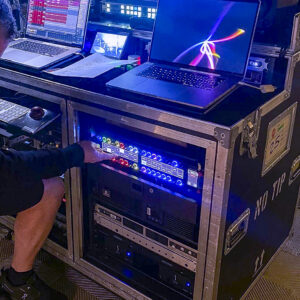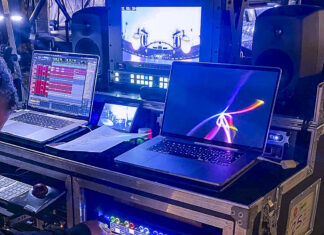Virtual control has quickly become the present and future of the AV world. Rather than the traditional “black box” set up in each conference room or hub, virtual control allows AV professionals to run and control their setup from one virtual space, whether through local software or a cloud program. When done correctly, it can save time, costs, and manpower.
The benefits are clear, so it’s no wonder that virtual control is spreading across the industry. In an episode of their podcast, State of Control, Steve Greenblatt and Rich Fregosa talked with industry experts Nick Miller and Raj Singh about the emergence of virtual control and where it’s likely to go from here.
The Supply Chain Crisis: Cause or Accelerant?
The global supply chain crisis of 2021 impacted nearly every industry, and the AV world was no exception. Amid a shortage of equipment for traditional AV control systems, virtual control seems to have taken over. But the questions are these: is that because of the supply chain crisis? Or did the supply chain crisis merely hit the gas for the change already coming?
According to Fregosa, although issues with the supply chain may have been the catalyst, the AV industry was already heading in this direction, mirroring a digital transformation over the past several years.
“A big part of it was the things that are controlled now don’t require as much of the black boxes and the analog interfaces,” Fregosa explains. It’s a drastic change from the way things looked 25 years ago. “Software ate the world. And because we are now living in a software world, the tools have to develop in order to keep pace.”
The Benefits of Virtual Control
Raj Singh is the Head of Learning Technologies at the University of Southern California. Pre-pandemic, Singh’s team changed their AV control across the entire campus to a virtual control system. It came down as a mandate from the university to move to a more cloud-centric, modern AV system. When his team explored their options, they found many benefits that made virtual control a perfect fit.
Space saving was one of the first advantages Singh noticed. “A lot of the heavy lifting of virtual control…was happening more on the software and cloud side. So the amount of hardware required in all our spaces went down.” This space-saving aspect was a boon for a downtown university. “Every seat that we can save is a seat a student can take and is revenue for the university.”
Virtual control also centralized AV control as a whole. Now, rather than running from room to room, professionals have a central hub that allows them to control elements of their AV across entire facilities.
Nick Miller points out that there’s an automated element to virtual control also. With virtual control, programmed commands are committed and deployed through the toolchain.
“It wasn’t that long ago that I would be out in the field and going from room to room to room to room, loading the same code over and over,” he says. “And if you find a bug in one room then you have to backtrack all the way through. Virtual control, if done right, eliminates that aspect.”
How Virtual Control Changes the Game
Still, there’s no question that virtual control is a vastly different system from previous “black box” methods.
“When you’re deploying virtual control, you have to take an enterprise approach and think of it as an enterprise level deploy,” Singh says. The one central system impacts the entire enterprise, drastically changing features like security. Registering different devices onto the virtual control server is also a change of pace from past control systems.
“It requires upfront planning to make sure that a lot of these things are covered,” he advises. Maintaining an enterprise-wide system also requires stricter change management guidelines since the entire virtual control system has to suit the whole enterprise.
Because of the scalability inherent in virtual control, Fregosa says it becomes more necessary to be a collaborator and team player. In the past, one-person “cowboys” often arrived to fix the isolated problem before moving on.
“There’s no more room for cowboys,” he says. “Part of me, you know, it hurts me because I spent a better part of my career as a cowboy, just kind of rolling in and doing what needed to be done. But we can’t do that in this environment anymore. There’s too much at stake.” Fregosa says communication among the team is key to a successful virtual control system.
Want to learn more about how virtual control is changing the game? Check out this episode of State of Control: Software Ate the World to hear more of the thoughts from Greenblatt, Fregosa, Miller, and Singh.









